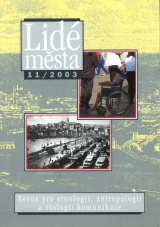Diskreditační stereotypy dětí
Skupina žáků sedmé třídy ZŠ
DOI:
https://doi.org/10.14712/12128112.4309Abstrakt
The study is devoted to the issue of form and working of the discrediting stereotype among children. The problem was examined on the basis of an analysis of empirical data mostly collected in the 7th grade of an elementary school (this means among B-year-old pupils) of a class observed in the longitudinal way. In the class under observation, there were four discrediting stereotypes which developed four cultural concepts: 1. The concept of ritual filthiness, which appeared in the form of loathing even in lower grades; 2. The concept of non-aesthetical body (fatness), which had formerly only been applied in insults; 3. The concept of a homosexual; and 4. The concept of a plodder or mummy's pet. The four discrediting stereotypes created a framework of the reasons for exclusion of a schoolmate. Basically, it did not matter whether the attribute which discredits a child really exists or not. The discrediting stereotype has become a prism through which the children started to observe their schoolmate and which stressed the discrediting attribute - a stigma -, applied in a stereotype fashion. The experience of 13-year-old children and their cognitive ability already allowed them to permanently verbally develop discrediting stereotypes, in the extent approaching the concepts adopted from the culture of adults. It was just the verbalisation and further acts of emphasis and reminders of discrediting stereotypes of marginalised pupils which became inevitable. Without them, there would not have been their real constitution and conservation, while social hierarchy in the children's group would not have been strengthened. As a result, discrediting stereotypes did not exist at all in any latent form, as it is often the case in the society of adults. The children from the observed class in the 7th grade accepted the discrediting stereotype as an instrument for expression anct later also for organisation of social hierarchy. Dramatisation of social situation in a class through discrediting stereotypes was vital for the children of the class uncter observation in the 7th grade. To some extent, it became an accepted cultural norm in the communication with marginalised members of a children's group. The "outcasts" who were unwilling to fall into line, whatever its cruelty, were excluded from the children's group. Those who outwardly put up with social ostracisation were at least spared the feeling of real exclusion from the society of schoolchildren. When they to some extent respected their marginal role, their discrediting stereotype, the children's group respected them as its members.
Stahování
Publikováno
Jak citovat
Číslo
Sekce
Licence

Tato práce je licencována pod Mezinárodní licencí Creative Commons Attribution-NonCommercial-NoDerivatives 4.0.


